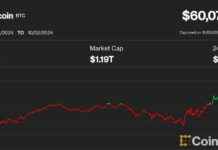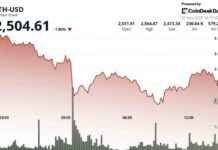Summary:
A soft U.S. inflation report is expected to impact various financial markets, including Bitcoin. While lower-than-expected data could lead to positive outcomes for risk assets like Bitcoin, it may not trigger a significant breakout. The consumer price index (CPI) report for January is anticipated to reveal insights into inflation trends, potentially influencing Federal Reserve interest rate decisions. Market analysts suggest that inflation rates could rise in the future due to various factors, including trade war fears and tariff policies.
Implications of U.S. Inflation Report on Bitcoin Price
As investors eagerly anticipate the release of the U.S. inflation report, scheduled for Wednesday, the impact on Bitcoin’s price outlook remains a topic of significant interest. With expectations pointing towards a softer reading for January’s consumer price index, the potential repercussions for Bitcoin and other risk assets are under scrutiny. The anticipated slowdown in the cost of living increase could signal a shift in market dynamics, potentially affecting Federal Reserve interest rate decisions and overall market sentiment.
The core inflation figures, which exclude volatile components like food and energy prices, are also expected to play a crucial role in shaping market expectations. A potential rise in core inflation rates may lead to renewed discussions about Fed interest rate cuts, influencing Treasury yields, the dollar index, and demand for riskier assets. While the market sentiment currently leans towards a possibility of limited interest rate adjustments, the implications of these decisions on Bitcoin’s price trajectory are being closely monitored by market participants.
Expert Insights and Market Analysis
According to seasoned market analyst Omkar Godbole, the evolving inflation trends and their impact on Bitcoin and other financial instruments are a reflection of broader economic dynamics. With inflation swap rates rising steadily, indicating future inflationary pressures, investors are navigating a complex landscape of market uncertainties. Godbole’s expertise in financial markets and technical analysis provides a unique perspective on the interplay between macroeconomic indicators and digital assets like Bitcoin.
Furthermore, insights from investment banks like BlackRock shed light on the nuanced relationship between inflation, interest rates, and asset prices. While some experts believe that a softer CPI reading may not alter the Fed’s decision-making process significantly, others argue that persistent inflation pressures could lead to a prolonged period of stable interest rates. These contrasting viewpoints underscore the complexity of factors influencing Bitcoin’s price movements and highlight the need for a comprehensive understanding of the interconnected financial ecosystem.
In conclusion, the upcoming U.S. inflation report represents a critical juncture for Bitcoin and other risk assets, offering insights into market trends and potential future scenarios. As investors brace for potential market fluctuations based on the CPI data, the intricate relationship between inflation, interest rates, and asset prices continues to shape the financial landscape. With expert opinions providing valuable perspectives on these dynamics, the evolving narrative of Bitcoin’s price outlook unfolds against the backdrop of macroeconomic uncertainties and shifting market sentiments.














